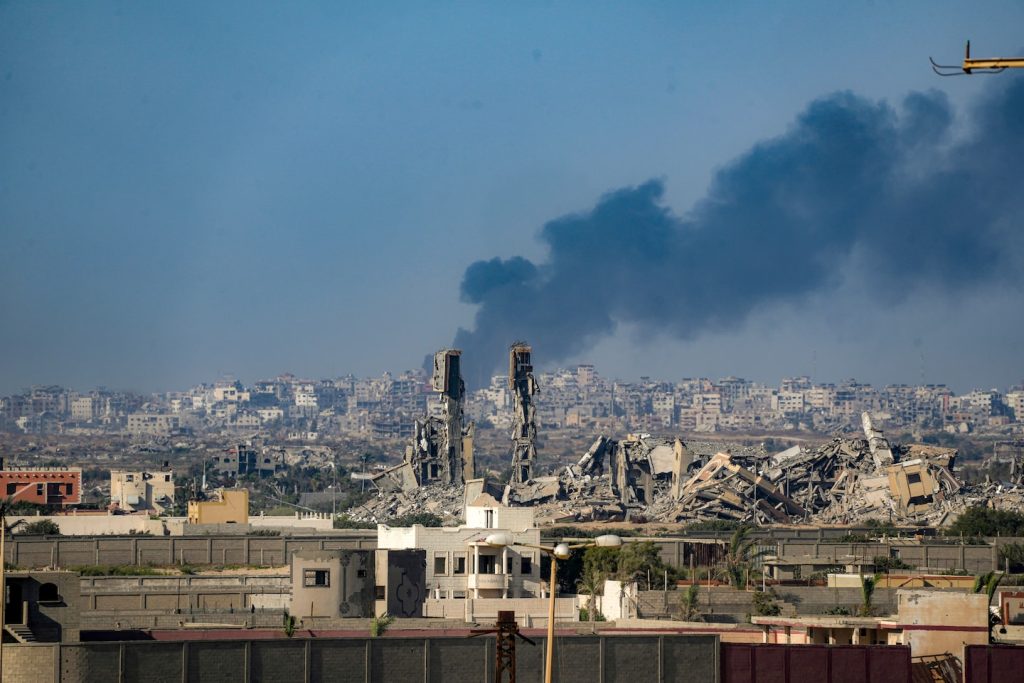Officials have warned that while the framework is in place, a final agreement may not be signed immediately and that the details are complex and will take time to iron out.
If a final agreement can be reached, it would be a stark vindication of Biden’s patient diplomacy as he has sought to balance America’s role as peacemaker in the Middle East with strong military support for Israel, and it could also be a bowing moment for the president, giving him a chance to either honorably step down from his bid for a second term or double down.
Like most peace deals, the deal reflects exhaustion on both sides. After nine months of war, Israel wants to rest its forces and prepare for a clash with Iran and its proxies. Hamas is in “disarray” in its underground hideouts and is short on ammunition and supplies, according to one U.S. official. There is also growing pressure from Palestinian civilians who are increasingly calling for a ceasefire.
The agreement, described by U.S. officials on Wednesday, calls for a three-phase resolution to the conflict. It begins with a six-week ceasefire during which Hamas will release 33 Israeli hostages, including all female prisoners, all men over 50 and all wounded. Israel will release hundreds of Palestinians from prisons and withdraw its troops from densely populated areas on Gaza’s eastern border. Humanitarian aid will flow in, hospitals will be repaired and workers will begin removing rubble.
The sticking point was a transition period in which Hamas would release its remaining male hostages and both sides would agree to a “permanent cessation of hostilities” with a “complete withdrawal of Israeli forces from Gaza.” Both sides feared that the other would use the initial pause to rearm and return to fighting, and Israel wanted to ensure it achieved its main objective, which was to prevent Hamas from regaining control of Gaza.
The breakthrough came recently when Hamas dropped its demand for written guarantees of a permanent cessation of fighting, instead accepting the reassuring language of a UN Security Council resolution passed last month, affirming the US-negotiated agreement, with a key passage reading: “If the first phase of negotiations takes longer than six weeks, the ceasefire will continue for as long as the negotiations continue.” In the UN resolutionThe US, Qatari and Egyptian mediators said they would “work to ensure that negotiations continue until all agreements are reached and the second phase can begin.”
Both Israel and Hamas have signaled their openness to a “transitional authority” plan, starting with the second phase, in which neither Hamas nor Israel would govern Gaza. Security would be provided by U.S.-trained forces backed by moderate Arab allies drawn from a core group of about 2,500 Palestinian Authority supporters in Gaza who have been vetted by Israel. Hamas has told intermediaries it is “ready to cede authority to a transitional authority,” U.S. officials said.
As post-war security in the Gaza Strip expands, the peace plan envisages a third phase, described in UN resolutions as a “multi-year reconstruction plan.”
As U.S. mediators came close to finalizing the deal, they received critical support from diplomatic partners Qatar and Egypt. To pressure Hamas, Qatar told the group’s representatives they could not remain in Doha if they rejected the deal. Egypt provided last-minute support, accepting an innovative U.S. proposal to seal new tunnels across the Egypt-Gaza border after Israeli forces withdraw.
Israeli Defense Minister Yoav Galant, who has emerged as a key negotiator, A statement was issued On Wednesday, it noted that “progress has been made with Egypt” towards a plan to “thwart smuggling attempts and cut off potential supplies to Hamas.”
A ceasefire agreement could pave the way for two other major shifts in the Middle East situation, involving Lebanon and Saudi Arabia, and reduce the risk of a broader war.
Lebanon has said it is willing to accept a draft agreement after a Gaza ceasefire that would include a withdrawal of Hezbollah forces from the border north to the Litani River, a deal that would also require Israel to accept border changes long-standing Hezbollah demands, and confidence-building measures to end the deadly rocket exchanges between the two countries.
The Lebanon framework has been negotiated by Amos Hochstein, a member of the staff of National Security Adviser Jake Sullivan. Instead of negotiating directly with Hezbollah, the Iranian-backed militia that controls Beirut, Hochstein met with Nabih Berri, the Shiite speaker of Lebanon’s parliament and a key ally of Hezbollah.
A potential final bonus of a Gaza ceasefire is that Saudi Arabia signals a readiness to “move toward normalization” of relations with Israel, U.S. officials say. Riyadh would like a path to a Palestinian state as part of any such agreement, but for traumatized Israel, that’s a bridge too far for now. Normalization will take time and diplomatic skill to finally materialize.
of Gaza War The Palestinian conflict, from the horrific Oct. 7 terror attack by Hamas to Israel’s devastating retaliatory campaign that has killed tens of thousands of Palestinians, has been a nightmare for every combatant and a tough test for Biden, who has sought to be a staunch ally of Israel even as he clashed with Prime Minister Benjamin Netanyahu over the war’s civilian toll.
“All wars must end,” strategist Fred Ikle wrote about Vietnam. Gaza isn’t over yet. But, as one White House official said late Wednesday, “we can only pray.”


